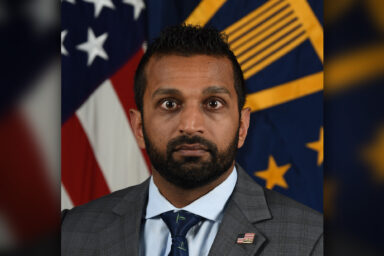EXCLUSIVE: Jeff Kaye exposes a second rendition and interrogation program, and argues that one of them amounted to human experimentation.
By scouring the Senate Intelligence Committee’s torture report and some declassified CIA documents, retired Psychologist Dr. Jeff Kaye has confirmed that there were two separate rendition, detention, and interrogation programs run by separate branches of the agency’s Counterterrorism Center.
The first, which we refer to as “Program A” in this podcast, is already known. Consultants James Mitchell and Bruce Jessen were paid over $80 million to reverse-engineer torture techniques from the military’s Survival, Evasion, Resistance and Escape (SERE) program designed to train troops and spies to resist torture.
Kaye builds a strong case that this effort amounted to human experimentation — for the purpose of identifying the most effective torture techniques.
“Program B” relied on “standard” interrogation tactics that included some forms of coercive interrogation, and it was not subject to the management and monitoring systems of the first one.
Kaye says the separate programs were “stovepiped” so that front-line personnel assigned to one program didn’t know about the other. But top CIA management — including current director Gina Haspel, former director George Tenet, and top lieutenants Cofer Black and Jose Rodriguez — had to have known about both programs.
Dr. Jeff Kaye is a retired psychologist who has been practicing journalism for 15 years. His report on the two programs is here, and the article on Gina Haspel’s role at three CIA “black” sites is here.
Click HERE to Download Mp3
Related front page panorama photo credit: Adapted by WhoWhatWhy from interrogation room by Noh Mun Duek / Wikimedia Commons (CC BY-SA 4.0)
Full Text Transcript:
As a service to our readers, we provide transcripts with our podcasts. We try to ensure that these transcripts do not include errors. However, due to time constraints, we are not always able to proofread them as closely as we would like. Should you spot any errors, we’d be grateful if you would notify us.
| Peter B. Collins: | Welcome to another radio whowhatwhypodcast. I’m Peter B. Collins in San Francisco. Back in December, Dr. Jeff Kaye broke a story that is still, pretty much, undercover in terms of mainstream media coverage. Dr. Jeff Kaye is a retired psychologist, who’s been practicing journalism over the last 10 or 15 years, and he’s covered a lot of fascinating stories, and he does deep dives into archive documents and things of that nature. And in December of 2018, at his medium blog, he published an article with a pretty astounding claim that there was not a single CIA torture program. There were, in fact, two that emerged after the events of 9/11. Dr. Jeff Kaye, it’s always good to talk with you. Thanks for being with me today. |
| Jeff Kaye: | Hey Peter. Thanks very much for asking me on. |
| Peter B. Collins: | And before we dive into your important reporting here, I want to note for our listeners that there is a feature film that Netflix will be releasing in the near future. It’s called The Torture Report and it stars Annette Benning playing the role of senator Dianne Feinstein; Adam Driver, Jon Hamm and other major stars are in the film. It’s written and directed by Scott Z. Burns. And I’m very curious to see how this portrays the work of the Senate Intelligence Committee under Senator Feinstein laboring for years and finally producing but not releasing a 6,500 page report on the use of torture by the US government in the early years of the Bush administration. |
| And I point this out, Jeff, because I’m concerned that the movie will push out a narrative that many people will find credible and it will Hollywoodize the actual facts and kind of lock them in the way the film Zero Dark 30 did about seven or eight years ago. | |
| Jeff Kaye: | Yes. Well, Peter, I share your concern although the Zero Dark 30 was meant to promote CIA torture and the idea that you could advance your career in the CIA by being a torturer, which turned out to be true as we saw with Gina Haspel. But this new movie, for the record, I don’t want to say too much because until I see it, I don’t want to condemn it; it should be very good. But I suspect with the participation of the primary author of the Senate Report, which was Daniel Jones as the main character and his collaboration with the film makers, that his narrative is what will be presented. And it is really a partial narrative. |
| Now, whether that’s due to … well, in my articles as we may go into here, it became clear to me that the CIA did in fact lie to Congress or withhold information from Congress so that the kind of narrative that they built had to be partial in any case. Now yet, they present a narrative that shows that we’re in the dark but we’re trying and this is what we did. I could respect that. There’s certainly a lot of things that were revealed in that document, in that work. But if they say this is the truth, and leave it as that’s it, that’s the narrative, then we’re going to be frozen out in the dark about a lot of things that really happened. | |
| Peter B. Collins: | And, Jeff, I share your concern. At the same time, as an optimist, I hope that the film called The Torture Report may be a point of embarkation for people who’ve never paid attention to the issue, to delve into it; and maybe the film will peak their interest to the point they’d say, “Well, I want to know what the real story is.” And did the CIA spy on the Senate Intelligence staffers illegally? Was it a constitutional crisis? And Dan Jones was clearly at the center of that fight. And so I hope that we will see accurate depictions of the events and the parties and that it might be a film that provokes people to challenge the history of torture. |
| And if only to bring out issues related to the current CIA director, Gina Haspel, whose confirmation process did not expose her full biography. And we’ll talk about your subsequent report following the December report on Gina Haspel’s being identified as being at three different CIA black sites where torture did occur. With that, let’s dive into your report because you took a look at various documents, including some that were released by the ACLU in 2018, and information about the Chief Of Medical Services at the CIA’s office of MS; I get lost in the acronym. | |
| Jeff Kaye: | Office of Medical Services. |
| Peter B. Collins: | Thank you. And you have been able to piece together enough information to substantiate your observation that there was not a single rendition and torture program. To help our listeners, we’re going to refer to the one that people know about as program A. That’s the rendition, detention and interrogation program and then program B, which we’ll detail in a little bit, came out of a separate office at the CIA. First explain to our listeners the source of the documents that led you to this reporting. |
| Jeff Kaye: | Well, the primary documents that I… well, I’ve been reading for a long time and there are so many documents but the primary documents in this case would be the Senate’s. In fact, the Senate Select Committee on Intelligence report or rather its executive summary, which is what we have made public that was released a few years ago, that is the matter for the background for this movie that’s coming out by Netflix. And this other memoir, really, by the director, we don’t know his name, of the Office of Medical Services of his years – it was written in 2007 – of his experience up to that point in the CIA Rendition and Detention and Interrogation or Torture Program. |
| And the memoir is amazing because, of course, the doctors think very highly of themselves and this guy obviously felt very highly of himself and he was going to defend himself against those … Because by 2007, certain amount of information had leaked to the press and there were a lot of people writing in the mainstream media, New York Times, The Washington Post and McClatchy about torture. And this was a defense that sorts his work and the work of his team in the OMS, defending their work in that program and trying to make clear what he felt were incorrect assumptions being made about what these doctors, CIA doctors did. | |
| And the key event that they talk about … Well, although he goes a lot into the initial origins of the program we’ll call program A with Abu Zubaydah and talks about … This report, by the way, made the press when it was revealed that for a time they were considering the use of truth drugs as part of the program. That did break through the press although the discussion of it in the press was very limited. And the death of Gul Rahman, some of you may think it’s Rahman but it’s pronounced Rockman R-A-H-M-A-N, who died at a prison called, sometimes, The Dark Prison or The Salt Pit or in documents that have been released it’s called Detention Site, Cobalt. And in this- | |
| Peter B. Collins: | It was in Afghanistan adjacent to the Bagram Air Base. |
| Jeff Kaye: | Yes, yes. And he died there in November, 2002. Now I was perturbed when this report first came out, the Senate report, because in it I like to skip to the footnotes in the appendices where I find the real information usually comes out. And in a very late appendix in the Senate release of their torture report is a back and forth between Senator Carl Levin and CIA director Hayden. And Levin is incredulous. He’s talking to Hayden and they’re talking about Gul Rahman and he says, “Well, all right, so you have this program going on, did anybody die in this program?” |
| He thinks he knows the answer so he asks it and Hayden says, “No.” And he goes, “Not even one person died? Come on and tell us about Gul Rahman, he was terrible.” He goes, “No, nobody died. We are aware that somebody did die while in CIA custody but not our program. Our program was the very highly disciplined and this was undisciplined behavior. Rahman was not even part of the program but I do understand he was in CIA custody.” And so if you hear this or read this and you think, “What in the world is he talking about? It just sounds like double talk.” And I’m sure that’s how the senators thought of it. But, in fact, he was telling the truth, kind of. | |
| He was keeping a card up his sleeve which was, “We had this other program,” program B, we’ll call it, as you say, which wasn’t highly regulated, which did not have doctors present, which used so called standard interrogation techniques instead of enhanced interrogation techniques and which has hardly ever been discussed. And if it hadn’t been for the death of Gul Rahman, which has kept a focus and the lawsuit that’s been done by his family and the works of groups like the ACLU to keep Rahman’s story alive, because even still to this day it’s not clear. We don’t know the whole truth about it. His body has disappeared so it cannot even be autopsied. | |
| His family never even got the body from the CIA. Anyway, when this new document came out from the Chief of the Office of Medical Services explaining the origins of the Enhanced Interrogation Program, which we call program A today, and then revealed that there was another program while it illuminated much that had been obscure in the discussions and the documents around CIA torture. I’m not going to say that it totally explains everything because there’s a lot of new questions that arise around it but it’s an aspect of how the CIA program operated that’s very important and needs to be out there. | |
| Peter B. Collins: | Jeff, let me try to understand this with a quote from your article. |
| Jeff Kaye: | Mm-Hmm [Affirmative]. |
| Peter B. Collins: | The program known as the Rendition, Detention and Interrogation Program, we’re calling it Program A for our discussion today, operated as a special mission or special access program within the special mission division of the CIA’s Counter-Terrorism Center. What we’re calling program B was run out of the Counter-Terrorism Center but, apparently, under a completely different silo. To the extent you’re able to divine, are there people who were at the top of the organizational chart at the Counter-Terrorism Center who would have known about both programs but kept them separate and stove-piped, in terms of the compartmentalization of the people who actually participated in the delivery of rendition and torture? |
| Jeff Kaye: | Well, yes. The special mission division which we mentioned, which was in fact the … it’s a division within the CIA’s Counter-Terrorism Center, sometimes called CTC. I try to stay away from acronyms as much as I can. |
| Peter B. Collins: | Well, you do a better job than I do. |
| Jeff Kaye: | We’ll see. This, oftentimes, is not clear. It was highly compartmentalized so a lot of people at CTC and within CIA didn’t even know about this program. They could honestly, of course, report things that they thought were the truth when in fact it wasn’t the whole truth. The program A, the Enhanced Interrogation Program, originated out of a totally different office. Its authority and its management, day to day management, fell under the Special Mission Division, but it heavily relied for staffing and apparently for even the ideas of how to proceed from a totally different office than the CIA, very important, known as the Office of Technical Services, the OTS. And that is an acronym everyone should know. |
| In fact, they may know if they read because there have been articles over the years highlighting this aspect of the CIA because it’s the gee-whiz James Bond, high-tech device, dart and guns, race cars with canons, perhaps, out of the headlights, assassination devices. It’s a gee-whiz kind of division as it’s presented to the public who even celebrated publicly its 50th anniversary in the press and everything. But it also was otherwise known for being the part of the CIA that for many years ran the MK Ultra program, the CIA’s mind control program that spent millions and millions and millions of dollars on how to control human behavior. It was the same one that famously used LSD drugs on people and brainwashing and all of this. | |
| And a group of psychologists within the CIA with this OMS or this chief of OMS report made clear was that the part of the CIA that created the enhanced interrogation program, program A, were people who were super keyed into MK Ultra. I will read to you this myself where he says, “The antecedents of this unit,” meaning the unit that created the enhanced interrogation techniques, “had overseen much of the Mk Ultra interrogation research in the 1950s and 60s published still relevant classified papers on the merits of various interrogation techniques and contributed heavily to a 1963 KUBARK counter-intelligence interrogation manual and its derivative 1983 human resources manual and they assisted directly in early interrogations.” | |
| When they say interrogations, we mean interrogations with torture. The KUBARK manual, which is K-U-B-<A>-R-K. What does that name mean? It’s just the CIA’s own name for itself. It’s an acronym for itself. | |
| Peter B. Collins: | Jeff, you’ve touched on something that has puzzled me for a long time. We know that the CIA paid, over the years, some $80 million to Mitchell and Jessen. You report that Mitchell was actually hired to produce a monograph before 9/11, which I find pretty fascinating. |
| Jeff Kaye: | Yes. |
| Peter B. Collins: | The accounts that we have or that Mitchell and Jessen took the established SERE program that stands for survival, evasion, resistance, escape; the way we train our troops, we try to harden them to be able to resist torture and interrogation. And the narrative is that Mitchell and Jessen reverse engineered the SERE programs to find the vulnerabilities that would work to crack jihadis and get them to tell us about the next terror attack. But I’ve always been suspicious of that narrative because the CIA has a long history of torture and of producing educational materials through the School of the Americas on how to help regimes that we are friendly with develop torture programs. |
| And so I don’t understand why the CIA felt the need to spend 80 million plus to reverse engineer SERE when in their own archives, as you point out, the KUBARK memos and documents going back decades were right there. | |
| Jeff Kaye: | Yes. And including, as you say … Yes, exactly. Of course, they were there. And I don’t believe that narrative and I haven’t for a long time. In fact, the more I think about it, Mitchell and Jessen were ops guys, Mitchell in particular. These are guys who went out and did ops. They would go out with special forces; they got training in interrogation techniques which, by the way, also came out. All this time, the Senate report, James Mitchell has no experience, no experience in interrogations and yet the report reveals, and I’ve talked to some various people about this and they had never heard of this before. The report reveals a lot. This report is maybe one of the most important. |
| The OMS released by this doctor gives us far greater insight into the internal workings of the CIA around torture than any document I believe that’s ever been released this far. One of the things that it reveals is that at psychology conferences, which happened annually for the joint personnel recovery agency which was people who ran SERE, SERE being the military survival training torture survival test that was given to many, many people in the military and intelligence services and State Department; secret agents and pilots, all sorts of things that at these annual psychology conferences there would be training done or at least some of them in interrogation. | |
| That the SERE psychologist and any other medical or psychological personnel were not just trained to help people who were released from incarceration by your enemies of the United States, which is its stated purpose. But, in fact, it had also been used to train people to participate <in> interrogations. And how far back this … In fact, if you go back to the Vietnam War there were… I could go into this but special forces personnel, high ranking, testified at the Bertrand Russell Tribunal, for instance, at the time that in fact, yes, SERE Survival training, this torture training was used to tell people how to torture people. It was there to, in fact, give them advice on training. | |
| Yes, this story falls apart and it also falls apart for a long time. I’d read the documents and it would say, “Yes, Mitchell and Jessen did reverse engineering along with other OTS personnel.” All right? | |
| Peter B. Collins: | Mm-Hmm [Affirmative]. |
| Jeff Kaye: | Who are these other OTS personnel or psychologists? Well, one of them might be Kirk Hubbard, Mitchell and Jessen’s boss who ran them through the Operational Assessments Division of the Special Missions Division of the CIA. And they showed up at a lot of different places that I’ve documented in various articles that I’ve done. It’s not just one article that I’m relying on, I want your audience to know, but I read long and deep into the reports, the documents surrounding this. And just as the CIA interrogators themselves use what they call a mosaic development, where they piece together the puzzle, the mosaic of different things, that’s what I’ve been doing. |
| You can put together and, of course, you have to test the reliability and validity of each piece of information that you get just as the interrogators do. And I think I do a better job than they do. And I think… | |
| Peter B. Collins: | Let me test your mosaic this way, Jeff. |
| Jeff Kaye: | Okay. |
| Peter B. Collins: | And let me just acknowledge, for our listeners’ benefit, that you’re dealing in a whole arena where you have to expose secrets. And so the fact that you may not be able to piece together everything doesn’t mean that what you have pieced together is not relevant or significant. But I want to just reference the two most egregious renditions that we are aware of and I want to stress that we may not be aware of things that went even further astray or awry. But the case of El-Masri which was a mistaken identity case; and the other one is Abu Omar who was plucked in a botched raid in Milan, Italy, in broad daylight where the CIA had 25 people on the ground and they violated their agreements with the Italians in terms of surveillance of Abu Omar. |
| And they popped him and renditioned him to Egypt where they knew he would be tortured. Are you able to figure out if El-Masri and Abu Omar were the targets of Program A or Program B? | |
| Jeff Kaye: | Well, I don’t know about Abu Omar since he was renditioned and sent to a foreign …. That’s one of the questions we have. It’s exactly what the agreements were with the foreign intelligence agencies, which of them were read into this highly classified Program A, which was about … Its basis, the article talks about adding information, about testing integrity and these kinds of interrogation techniques, testing them in a scientific way, looking at both psychological variables and physiological variables so that they could understand more about torture; for their own purposes to gain generalizable knowledge about torture. |
| It’s science but it’s what you might call black science. Right? In the case of El Masri though, we do know because he was sent to the Salt Pit. He was sent to Afghanistan. He was part of Program B. Interestingly, just the other day I was re-looking again at the January 2003 set of instructions about interrogation techniques, guidelines on interrogations conducted pursuant to this presidential memorandum back in September 2001 after 9/11. And I was looking at the most recently declassified version but there was an earlier classified version, that the declassified version released, which had more redacted. | |
| And what they were redacting was that in what we call Program B, they redacted that this certain so called standard not enhanced techniques were also used during transportation meaning during rendition. The rendition program could take people, so called high value detainees, into the enhanced interrogation program, Program A, where they were subjected to highly structured torture, highly structured interrogation, which utilized torture techniques which were constantly monitored by medical personnel on the scene who kept a record of all of this. Or they could be sent to the other Program B detention center, in this case the Salt Pit in Afghanistan where they were subjected not to enhanced techniques but to so-called standard techniques which supposedly did not incorporate significant ‘physical or psychological pressures’. | |
| But which used … besides all forms of questioning allowed by military interrogators. Otherwise you would use isolation, sleep deprivation, reduced caloric intake, meaning they partially starved them, use of loud music or white noise, not enough to damage their eardrums but enough to drive a person crazy, and strangely the use of diapers for certain periods of time not to exceed 72 hours. Meaning that we’re going to humiliate you, they were going to … And these are just the ones we know of. We know from other reports of detainees that, of course, there were beatings. We suspect there was use of drugs. There was the rectal rehydration. In his book, James Mitchell says, “I don’t know what this rectal rehydration stuff is. I never did it. That was not part of the program. | |
| Look for it. You won’t find it. It’s not in there. I didn’t do it. It’s ridiculous.” It may be but that’s what was done. Now he could, of course, be lying, but I do believe that many of the more egregious forms of … well they’re all egregious, but of the new egregious forms that were revealed, were part of the so-called Program B standard techniques. | |
| Peter B. Collins: | Now, Jeff, it occurs to me that there had to be somebody who had the authority to direct traffic and this would be at the top of the ranks of the counter-terrorism center and it would be somebody who gets a report from the field; “We’re about to grab this guy, where are we going to send him?” And somebody had to make that decision whether they go to door number A or door number B. And it occurs to me that that very well could be Gina Haspel. |
| Jeff Kaye: | Gina Haspel, Jose Rodriguez, Coffer Black and George Tenet who of course isn’t per se CTC but who was the director of Central Intelligence. These people would be the top that I know of at the moment. Oh, another guy because I’m still … my research is ongoing, but who I believe was probably involved was … Oh God, what’s his name? Now I’m blacking out on his name, the guy who some researchers identified as being involved. Blees or Bees, involved in the hiding some of the stuff. |
| Peter B. Collins: | Rich Blees, I think, is the name. |
| Jeff Kaye: | Yes, he’s another guy. I would throw him in with that other group. |
| Peter B. Collins: | Okay. In a subsequent report you are able to piece together, from different sources, strong evidence that Gina Haspel was at a black site at Guantanamo and described as Chief of Base so she was the boss. And this was around 2003 or 2004. We have previous reports that she was at the black site in Thailand and the reports indicate that she was there after waterboarding occurred. Perhaps, more waterboarding did occur, that was Alan Ashiri. And then the third siting places her in Poland, is that correct? |
| Jeff Kaye: | Yes. Well, the stuff about Gina Haspel in Thailand, I’m not sure who first reported on that but it came out prior to the hearings, the congressional hearings. It was already clear to the people, to the Senate inquisitors, that they knew that she was involved in torture and they just took her word. Now, how much do they really knew about … While she was just there, it was less than a month. She was sent, what was she’s supposed to do? She actually was against it, whatever … I’ll never torture again. But, in fact, they were hiding, as you say, some of her other activities around this. |
| It was Carol Rosenberg, I believe, a reporter at the Miami Herald who first saw that, in a document that was released as part of the military commissions during a hearing, highly redacted and yet it came out in the discussion that Gina Haspel had been Chief of Base at the CIA black site at Guantanamo, which was shut down in 2003 or 04, it’s unclear to me. Well, no one knows exactly when it was shut down and people were moved out. People like Khalid Sheik Mohammed, and others … and Abu Zubaydah. But also overlooked in that document, I was very pleased that this was released and that this kind of work was done. | |
| And, of course, unlike most people I went and actually read the document, the whole document that it came from and was surprised to see that not only had she had been at the Guantanamo black site but she would have also been at black site, according to this document, in Poland. And that furthermore the attorneys, the military commissions’ defense attorneys, involved and who were quoted to this effect in the document, which is still highly redacted, were trying to get this information to Congress and were being denied. Because, of course, the attorneys can’t say anything that the different military commissions defense attorneys can’t really say anything for fear of releasing classified information and getting into a whole lot of trouble, legal trouble; so they don’t. | |
| But in this document that was declassified … And while the fact that … It’s kind of a curse I have lately, I’ve noticed that despite the fact that her presence at the Guantanamo black site was reported widely, it just says it’s been widely reported, that she was at the Thailand Cat’s Eye CIA black site prison. Nobody else, but myself, has reported that she also was at the Poland black site. That’s three; sort of like three strikes and you’re out. This woman was a major player in the torture program which is not how she was presented at the congressional hearings and as you’re inferring, perhaps, as well was involved from some other evidence. | |
| And I think one reason the Poland site is not being talked about is because it brings up a lot of questions about legal culpability as it presently exists in this world because Poland is, unlike the United States, a member of the International Criminal Court, the ICC. And they are mandated as such to prosecute people for things like this. And just recently the European Court of Human Rights legitimated the fact that Abu Zubaydah and El-Masri who’s attorneys had filed suit about their imprisonment in the black sites in Poland and Lithuania, were awarded special status for being torture victims. | |
| And the states of Poland with Lithuanian were supposed to pay them €100,000 each for what they suffered as their liability for their participation in the torture program, by allowing the CIA to set up these spaces. If Gina Haspel was at the site in Poland … see Guantanamo is outside the law, just to quote a book that was written about Guantanamo. In Thailand, for all intents and purposes is to … because it’s run by a puppet government for the United States. But Poland is not supposed to be that way. But why other press wouldn’t report this, and I tried to make it known as widely as possible, is disturbing to me. It means there’s a wider collaboration in withholding information about the CIA program than I would like to imagine there should be. | |
| Peter B. Collins: | Well, Jeff, I’m happy to amplify the story that you have broken here but it is a shameful note that the corporate media in this country has not picked up on it at all and appears to have no interest in digging into the grizzly history of torture, Guantanamo and the related matters. And as we wrap up, Jeff, I want to note another important thread in this article that you’ve published. You establish, again, by comparing Program A to Program B, that Program A essentially involved very tightly orchestrated scientific based experimentation on human beings. And that we have a historic parallel here to Dr. Joseph Mengele and the experiments that he conducted on Jewish prisoners during the Holocaust. |
| And I think it’s really important to underscore this because, as you point out, at a certain point the inspector general is saying, “Hey, we want to know if these torture techniques work.” And then they drew back saying, “Well, gosh, if we do that we’re creating a record of human experimentation.” And so, then, they adopted a third way by calling it “quality control”. And this bends the mind in a very dark direction that we would have doctors, psychologists, psychiatrists who were there taking notes as we inflict pain and humiliation and torture on a subject. And then they would file reports and figure out ways to do it even better on the next victim. | |
| And this sorted exploitation of science and knowledge and systems is something that, I think, needs to be sharply repudiated. And we have to acknowledge that President Obama took no steps to expose or prevent a repeat of this dark cycle of American history. | |
| Jeff Kaye: | Yes. Yes, I’m so glad that you brought that up. It is really the core argument that I’m making and that I believe that it’s important. It’s that the way to understand this torture program, Program B, the standard interrogation program, is something done by many countries around the world, the CIA as part of it. It’s not extraordinary in that sense but only, and of course, in the sense that the United States puts itself forward to something better and it’s not. But the other program, and this is what speaks to the upcoming Netflix movie, is it going to reveal that really at the core of this program was a diabolical research program to look at torcument; to study, in fact, torture and to do experiments about torture on individuals. |
| It goes against the Nuremberg principles; it goes against law, international and domestic. And it’s frightening to think that this is what’s at the heart of our government are these Nazi-like secret research programs. It sounds like something out of a wild conspiracy fantasy but then so did MK Ultra and it’s all true. And the discussion breaks forth once in a while around this issue of the effectiveness of torture techniques and one of the interesting findings in this document that I found was that, oddly enough, James Mitchell and Bruce Jessen argued against these kinds of research because they felt you couldn’t do it; that it’s impossible really to research. | |
| And actually the only thing I agree with them on is this, it’s impossible to research torture for various reasons and not the reasons they said although the ones they said are also true which had to do with the methodology of it not the morality of it or the legality of it. But it’s important that … Obviously we don’t have time to go into all the reasons and facts to back up why I’m saying there was a research program but it is there in the article. I’ve reported on it elsewhere and at other times where I’ve found scattered references to like being read into the program for research for detainees as I found in another spot, not reported in this article, but in other writings that I’ve had. | |
| And also The Washington Post as I do note in my article @medium.com is on Program A and Program B that the contracts that Mitchell and Justin had were not to do interrogation. They were to conduct research. Those contracts were revealed by The Washington Post just last year, I believe. That’s what we have here and it’s really… A challenge is, what is the society going to do about it? And I thank you very much for giving me a platform and taking on yourself this issue because it’s very, very important to our democracy and to our culture. | |
| Peter B. Collins: | Well, there’s no pleasure in it but I appreciate your comment and I want to thank you for staying with us. Most people have moved on and they consider Guantanamo and these egregious practices as part of a past chapter. But with the current president these could be resuscitated at any time and perhaps they already have and we don’t know it. With Gina Haspel at the helm of the CIA, we have to remain vigilant and skeptical. Jeffrey Kaye, I do appreciate your in-depth research and reporting on these issues and I look forward to your future dispatches. |
| Jeff Kaye: | Thank you very much, Peter. |
| Peter B. Collins: | Thanks for listening to this podcast interview with Dr. Jeff Kaye. Send your comments to Peter at peterbcollins.com and I’d appreciate it if you could make a contribution to support the great investigative journalism work here at whowhatwhy. |






